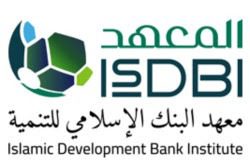

In 2023, developing countries faced a financial crisis as they collectively spent a staggering $1.4 trillion on foreign debt payments. This figure, reported in the World Bank’s latest international debt study, underscores the growing burden of debt servicing in an era of tightening global credit conditions. Interest costs surged to $406 billion—a 20-year high—while principal repayments declined, reflecting the intensifying fiscal strain on the world’s poorest nations.
The Impact on African Economies
African nations have been hit especially hard, as the debt crisis diverts critical resources away from health, education, and environmental sustainability. Among the most affected are countries eligible for the International Development Association (IDA) loans. In 2023, these nations spent a record $96.2 billion servicing debt, with $34.6 billion going solely toward interest payments. This marks a fourfold increase compared to a decade ago, highlighting how rising interest rates have compounded fiscal challenges.
Ghana exemplifies these difficulties, grappling with a debt-to-GDP ratio exceeding 70%. The Ghanaian government recently secured a $3 billion bailout from the International Monetary Fund (IMF) to stabilize its economy. Similarly, Kenya saw nearly half of its export earnings in 2023 consumed by external debt payments, leaving limited funds for infrastructure and social programs. These examples illustrate how escalating debt obligations are undermining economic stability across the continent.
Financing Shifts and Challenges
The World Bank report highlights a shift in financing sources for developing economies. As private creditors impose stricter lending conditions, multilateral institutions like the World Bank have become critical lifelines. Between 2022 and 2023, private creditors received $13 billion more in debt payments from IDA-eligible nations than they provided in new loans. In contrast, multilateral institutions injected $51 billion more into these economies than they collected in repayments, with the World Bank alone contributing $28.1 billion. This support has provided temporary relief but underscores the growing reliance on multilateral funding.
This dependence introduces new challenges. Borrowing from multilateral lenders often comes with stringent conditions, requiring nations to balance immediate financial needs with long-term economic goals. Zambia, for instance, defaulted on its debt in 2020 and is currently negotiating restructuring under the G20’s Common Framework. While such initiatives provide a temporary reprieve, they also highlight the precarious financial positions many African economies face.
Country-Specific Struggles and Recent Developments
Several African nations are confronting acute debt-related challenges. Senegal, for example, is implementing measures to reduce its budget deficit from 10% to 7% of GDP by 2025, following audit revelations that disrupted a $1.9 billion IMF program. Meanwhile, Cameroon’s President Paul Biya has warned of “disastrous consequences” for financial stability in Central Africa unless urgent steps are taken to address declining oil production, prolonged civil conflicts, and rising debt burdens. These cases demonstrate the diverse and complex challenges African nations face in managing their debts.
Implications for Policy and Investment
The rising debt burden carries significant implications for African policymakers, investors, and development agencies. High debt servicing costs, averaging 6% of export earnings for IDA countries and reaching as high as 38% in some cases, constrain governments’ ability to fund sustainable development projects. This underinvestment in critical sectors perpetuates a cycle of low growth and heightened fiscal vulnerabilities.
Despite these challenges, opportunities exist for innovative financing. Green bonds and blended finance mechanisms have emerged as viable solutions. Nigeria’s successful issuance of a $41 million green bond in 2023 showcases the potential of such instruments to mobilize resources for sustainable projects while managing debt responsibly.
A Path Forward for Africa
Tackling Africa’s debt crisis requires a multifaceted approach. Governments must prioritize fiscal discipline and economic diversification to reduce reliance on external borrowing. Strengthened regional cooperation, particularly through the African Continental Free Trade Area (AfCFTA), could significantly boost trade revenues and enhance economic resilience.
The international community also plays a vital role. Expanding initiatives like the Debt Service Suspension Initiative (DSSI) and the Common Framework could provide more inclusive and effective relief for vulnerable nations. Meanwhile, multilateral lenders like the World Bank should continue innovating their funding models to support sustainable development, ensuring a balance between immediate needs and long-term fiscal health.


